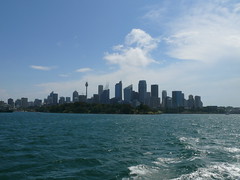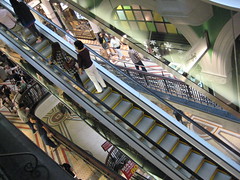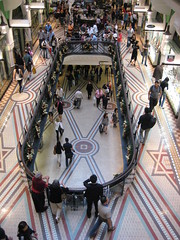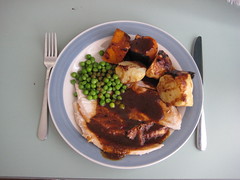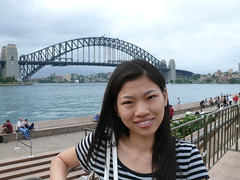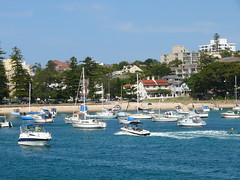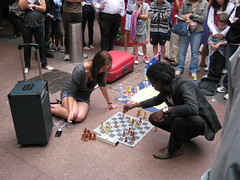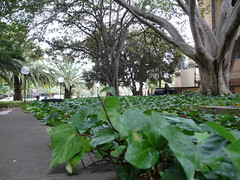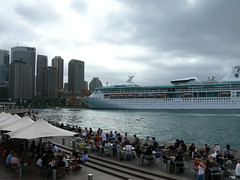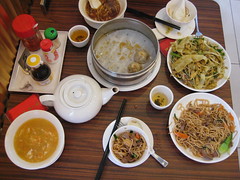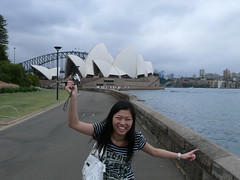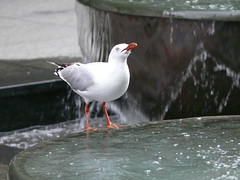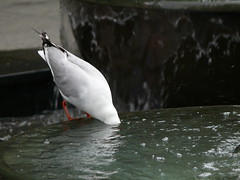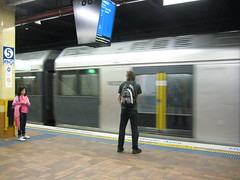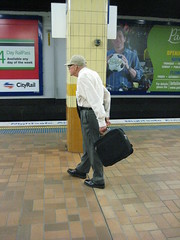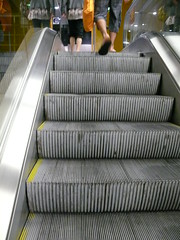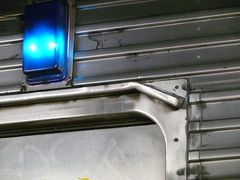
The cell phone is like some kind of pocket-size Death Star, moving through the gadget universe and destroying all in its path. First, PDAs. Then cameras. Then media players, GPS devices and more. One of its forgotten casualties is the wristwatch. Don't look now, but wristwatches are poised for a comeback.
The reason? Wristwatches are now trying to beat cell phone at their own game: Convergence.
People, especially young people, have found wristwatches redundant because their cell phones tell the time. But a new generation of wristwatches turns the tables and feature full cell phone functionality.
Cell phone wristwatches have been lurking at the fringe of mainstream computing for probably a decade or so. But, suddenly, they're appearing in higher numbers, better form factors and in more usable configurations. Plus, they're getting less dorky and more cool.
LG unveiled recently its LG GD910 watch phone, which like the iPhone is all screen with virtual, on-screen buttons. The GD910 has a camera, so you can do real videoconferencing like Dick Tracy. It supports MP3 files and Bluetooth.

Another new contender is the sWaP Mobile Phone Watch. It surfs the Web, plays music and video, takes pictures and more. Data is stored on a standard MicroSD card.
But the most promising and, well, most awesome new cell phone wristwatch is the Phenom SpecialOps Cellphone Watch. The watch has a cell phone keypad on the strap, and, like the others above supports Bluetooth, MicroSD, MP3s and more. It even comes with a tiny, pull-out stylus for using the mini touch screen.
Even more interesting is that the Phenom SpecialOps watch is just one of many cell phone wristwatches for sale by Phenom. They've got sports cell phone wristwatches, business cell phone wristwatches and even watches made for girls and women -- and accessories and peripherals to go with them! (They've also got a cell phone wristwatch that defies description.)
I think this could be a real trend. A cell phone wristwatch lets you basically just not carry a cell phone -- and still be able to make and receive calls, take pictures and entertain yourself on the subway.

LG
The LG-GD910 phone will go on sale first in Europe and builds on a prototype shown at CES 2008.
the center of the watch face is a 1.4-inch touchscreen display that is used for most interaction. It is used as the keypad when making a call, for example. There are also buttons down the side of the phone's body.
The WCDMA (wideband code division multiple access) phone supports the latest 7.2Mbps (megabits per second) HSDPA (high-speed downlink packet access) data system, so downloads should be fast. It can also make video calls via a small camera above the top right corner of the screen.
Other features include Bluetooth, an MP3 player, a speakerphone and a text-to-speech function. The handset is also waterproof.
SWAP watch

CAST out your mobile phones (but keep the SIM card, it’s quite important) and get ready for a new dawn in mobile technology.
The sWap Watch has arrived.
For too long the mobile phone has dominated the landscape of techno communications, while the trusty watch was left alone on the bedside table, gathering dust while we, its selfish masters, galavanted from meeting to meeting, keeping time with our trusty pocket sized PDA’s. The mobile phone heartlessly usurped the watch of its fundamental duties but the ‘sWap Watch’ is out for revenge and will not stop until the mobile phone has gone the way of the sun dial and the Dodo.
The tables have now been turned. The sWap Watch doesn’t just double as a mobile phone – it’s like having a multimedia centre strapped to your wrist, and all without the crushing shoulder strain.
Want to check your emails? Surf the internet?
Listen to music? Take Pictures? Watch a movie?
MAKE a movie? It does ALL of these. It’s in danger of completely eradicating boredom, revolutionising every minute of your day into a potential fun zone. The next time you’re stuck on the train you’ll just need to check out the 1.5 inch screen on your wrist for an instant fix of entertainment that’ll turn your commute into a pleasure cruise rather than a chore. The memory card slot allows you to insert a Micro SD card to upgrade the already impressive 512MB memory to a whopping 2GB. With all that memory you’ll have no problem storing all the MP3s and movies you’d need for a short jaunt.
If you really get bored (and with this watch, it’s hard to see how you could) you could even check the time (from one of the many different watch faces stored in it’s memory) or make a phone call.
The watch will accept most SIM cards, so upgrading is hassle free and making calls couldn’t be simpler – just plug in the hands free kit and you’re good to go. If you really want to go one step beyond and banish those pesky wires along with your mobile phone then you’ll be ecstatic to hear that the watch is Bluetooth compatible. You won’t even have to fork out for the headset as it’s included in the package.
Phenom

functions as an MP3/MP4 player through a MicroSD port. Other features include a 1.3" touchscreen display, Bluetooth, speakerphone, numeric keypad and a videocamera.
Yes, this cellphone watch handles video when the iPhone still doesn't.
... The future has arrived and it’s a wristwatch.







